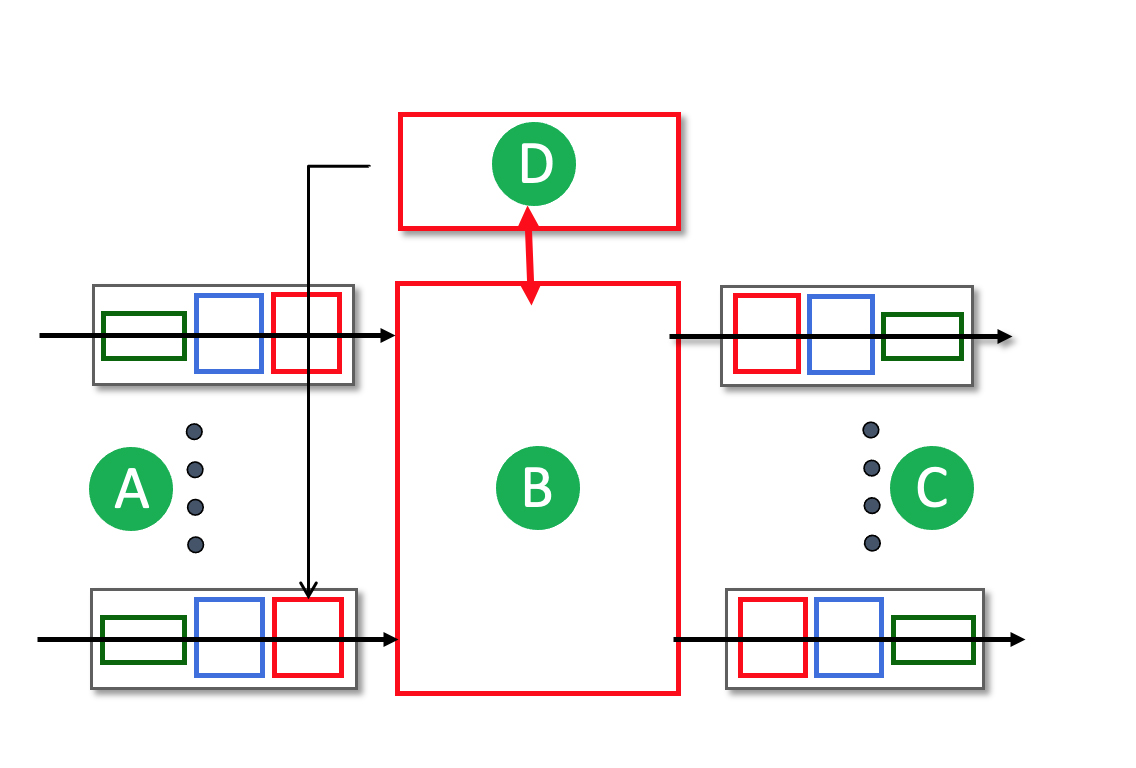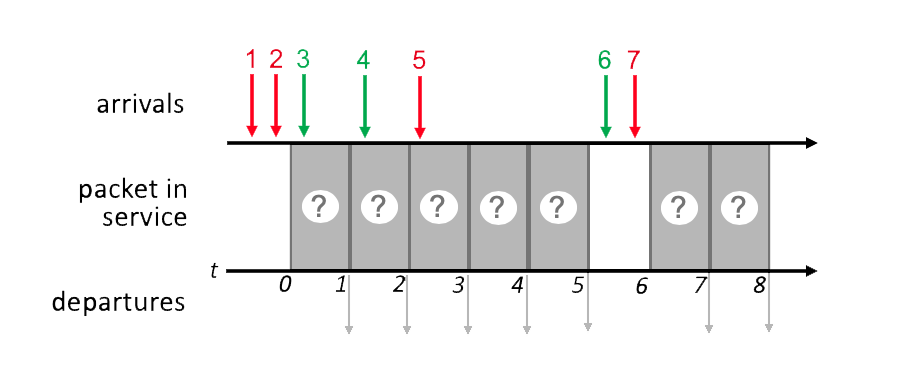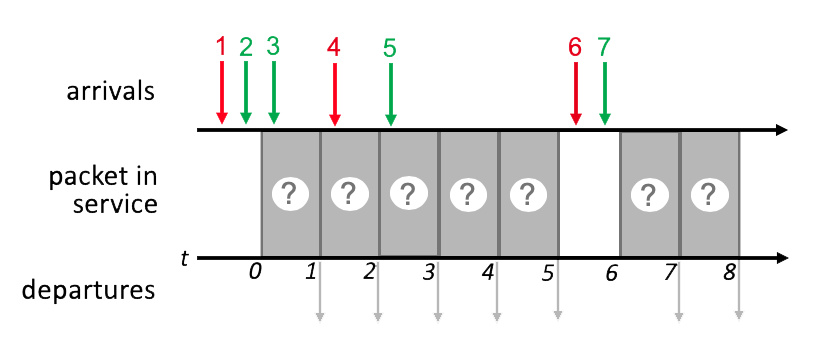What's inside a router?

Where does destination address lookup happen?
Where does "match+action" happen?
Longest prefix matching.

Packet dropping.
HOL blocking.
Packet scheduling (Scenario 1, FCFS).
[Note: You can find more examples of problems similar to this here.]

Packet scheduling (Scenario 1, Priority).
Give your answer as 7 ordered digits (each corresponding to the packet number of a departing packet), with a single space between each digit, and no spaces before the first or after the last digit, e.g., in a form like 7 6 5 4 3 2 1).
[Note: You can find more examples of problems similar to this here.]

Packet scheduling (Scenario 1, RR).
Give your answer as 7 ordered digits (each corresponding to the packet number of a departing packet), with a single space between each digit, and no spaces before the first or after the last digit, e.g., in a form like 7 6 5 4 3 2 1).
[Note: You can find more examples of problems similar to this here.]

Packet scheduling (Scenario 2, FCFS).
[Note: You can find more examples of problems similar to this here.]

Packet scheduling (Scenario 2, Priority).
Give your answer as 7 ordered digits (each corresponding to the packet number of a departing packet), with a single space between each digit, and no spaces before the first or after the last digit, e.g., in a form like 7 6 5 4 3 2 1).
[Note: You can find more examples of problems similar to this here.]

Packet scheduling (Scenario 2, RR).
Give your answer as 7 ordered digits (each corresponding to the packet number of a departing packet), with a single space between each digit, and no spaces before the first or after the last digit, e.g., in a form like 7 6 5 4 3 2 1).
[Note: You can find more examples of problems similar to this here.]
